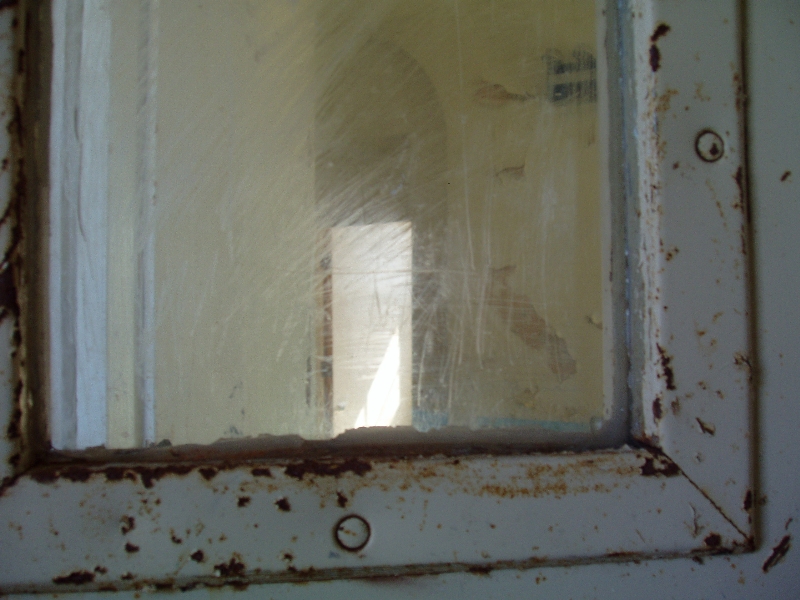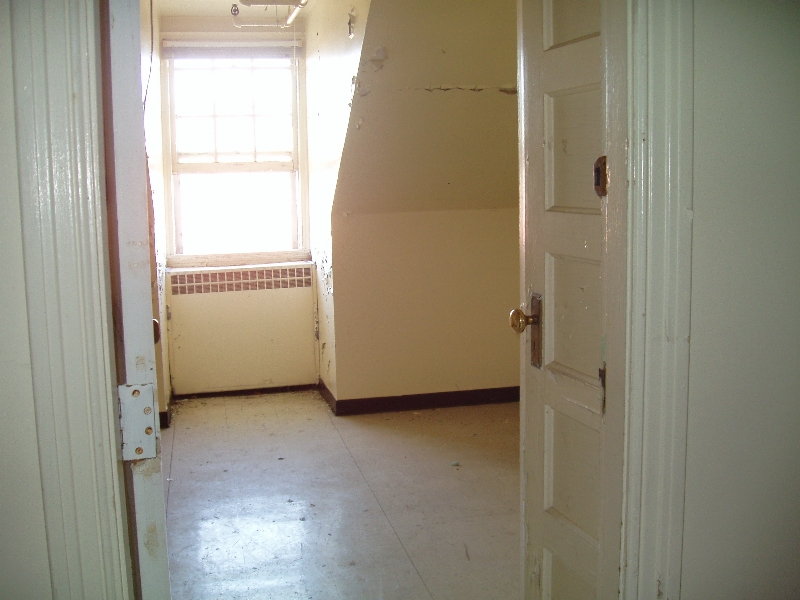
DeJarnette Behavior Programs
Seclusion

During the 1980s, the DeJarnette Children's Center used seclusion methods for children that exhibited behavior that was dangerous to themselves or others. The DeJarnette Center had several seclusion rooms located on the top and bottom floors. The doors to these rooms could be locked and unlocked only from the outside. The doors had an outer lock, but none on the inside. This way, the child would not be able to lock themself in the room and staff had control. In addition, the doors had small windows on them so that staff were able to view the child. The photo above shows the door of one of the seclusion rooms at the DeJarnette Center.

Above is the patient's view out of the seclusion window. You can see the hallway and one of the rooms. It was difficult to get a clear picture since the seclusion window was old and scratched.

Seclusion rooms are very small and are usually not furnished. I was surprised that the seclusion rooms at the DeJarnette Center had windows. Most seclusion rooms do not have any windows on the walls unless they have bars or mesh. The rooms at DeJarnette did not have either. Most seclusion rooms are the size of a large closet. The walls and floors of the seclusion rooms are made out of concrete and are soundproof. A child's time spent in seclusion might last for several hours. Staff would also use mechanical restraints, such as a straitjacket, with some of the patients. The staff would document the seclusion events. It was especially important to monitor patients that were suicidal. The photo above shows the inside of one of the seclusion rooms at DeJarnette.

Several of the seclusion rooms had security mirrors on the ceilings. By looking into the window, staff were able to quickly see the child's location in the room without staring into the window. Above is a picture of one of the seclusion rooms with a mirror on the ceiling.

Time-out was the most frequently used method of seclusion. This involved removing the child from the group and placing them in a time-out room. However, the door would be left open and not secured. Generally, most children spent between 5 to 15-minutes in the time out room. If they became too disruptive in time-out they would be placed in seclusion. The staff would also document time-outevents. Above is a photo of a time out room on the seclusion ward.